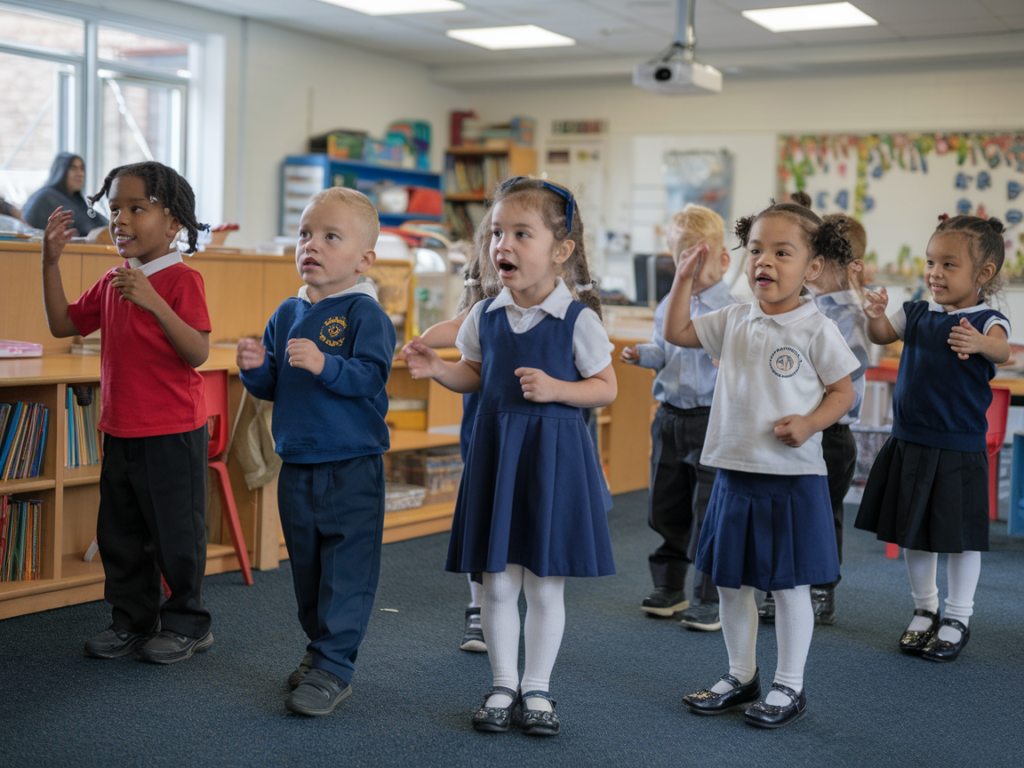The Foundation of Effective Classroom Management
For decades, experienced educators have relied on a core collection of brain breaks that consistently deliver results. These time-tested activities have earned their place in classrooms worldwide because they work—regardless of grade level, subject matter, or classroom dynamics.
Understanding which brain breaks have stood the test of time gives new teachers a reliable foundation and reminds veteran educators of proven strategies they may have forgotten. These classic activities require minimal preparation, work with any class size, and can be implemented immediately when you notice students losing focus.
The Science Behind Traditional Brain Breaks
Research consistently validates what experienced teachers have long known: strategic movement and mental shifts enhance learning capacity. Classic brain breaks work because they address fundamental neurological needs that haven’t changed despite advances in educational technology.
When students engage in these traditional activities, their brains receive increased oxygen flow, stress hormones decrease, and attention spans reset. The beauty of classic brain breaks lies in their simplicity—they don’t require special equipment, extensive training, or complex instructions.
Essential Movement-Based Brain Breaks
Stretching Sequences The foundation of physical brain breaks begins with basic stretching. Have students stand beside their desks and lead them through arm circles, shoulder rolls, and gentle neck stretches. This classic approach works because it addresses the physical tension that builds during seated learning.
Extend the sequence by adding toe touches, side bends, and calf raises. The key is maintaining a steady rhythm while ensuring every student can participate regardless of physical ability. These movements activate different muscle groups while promoting blood circulation to the brain.
Simon Says Variations This timeless game adapts perfectly to classroom brain breaks. Rather than traditional commands, incorporate academic elements: “Simon says point to something rectangular” or “Simon says make the shape of the first letter in your name.”
The cognitive processing required for Simon Says engages working memory while the physical movements provide the neural reset students need. Teachers appreciate this brain break because it combines movement with listening skills and following directions.
Marching in Place Simple yet effective, marching in place serves as an instant energy booster. Students can march to different tempos, lift knees high or keep movements small, and even incorporate arm swings or clapping patterns.

This classic brain break works particularly well when transitioning between subjects or when energy levels drop mid-lesson. The rhythmic movement helps synchronize brain waves and creates a sense of unity among students.
Time-Tested Mental Brain Breaks
Counting Patterns Engaging students in counting sequences provides mental stimulation without physical demands. Start with simple patterns like counting by twos or fives, then progress to more complex sequences like counting backward from 100 by sevens.
These brain breaks strengthen mathematical thinking while giving students’ minds a structured break from previous learning content. The cognitive shift helps reset attention while reinforcing number sense.
Alphabet Challenges Classic alphabet brain breaks take many forms: reciting the alphabet backward, naming words that start with each letter in sequence, or creating alliterative sentences using consecutive letters.
These activities engage language processing areas of the brain while providing a familiar structure that students find comfortable. The predictability of alphabet work makes these brain breaks particularly effective for anxious learners.

Memory Games Traditional memory games like “I’m Going on a Trip” or “Grandmother’s Trunk” combine mental exercise with social interaction. Students take turns adding items to a growing list while trying to remember all previous contributions.
These brain breaks strengthen working memory, improve listening skills, and create positive social connections among classmates. The collaborative nature helps build classroom community while providing cognitive exercise.
Quiet Classic Brain Breaks
Deep Breathing Exercises Teaching students basic breathing techniques creates a tool they can use independently throughout their lives. The classic “4-7-8” breathing pattern (inhale for 4, hold for 7, exhale for 8) helps activate the parasympathetic nervous system.
Guide students through belly breathing by having them place one hand on their chest and one on their stomach. Proper breathing technique ensures the stomach hand moves more than the chest hand, promoting deeper relaxation.
Progressive Muscle Relaxation This systematic tension-and-release technique helps students identify and eliminate physical stress. Start with toes, having students tense the muscles for five seconds before relaxing completely.
Work progressively through each muscle group—feet, calves, thighs, abdomen, arms, and face. This classic brain break teaches body awareness while providing deep relaxation that enhances subsequent learning.
Visualization Exercises Guided imagery has helped students focus for generations. Lead students through peaceful scenes like walking on a beach, sitting by a campfire, or floating on clouds.

These mental brain breaks work because they engage the imagination while promoting relaxation. Students learn to create their own mental escape routes that they can access during stressful moments.
Integration Strategies for Maximum Impact
Timing Considerations Classic brain breaks work best when implemented proactively rather than reactively. Schedule them at natural transition points: between subjects, after intensive focus periods, or when returning from lunch.
Most traditional brain breaks require 2-5 minutes, making them easy to incorporate without disrupting lesson flow. Consistency matters more than duration—regular short breaks prove more effective than occasional long ones.
Adaptation Techniques The beauty of classic activities lies in their adaptability. Modify intensity levels, add academic content, or adjust participation requirements based on your students’ needs.
For younger students, incorporate more movement and shorter instructions. Older students can handle complex variations and even lead their own brain break sessions.
Building Routine Establishing brain break routines helps students know what to expect and reduces transition time. Create signals for different types of breaks—a hand gesture for stretching, a specific phrase for breathing exercises, or background music for movement activities.
Students thrive on predictability, and classic brain breaks provide the structure they need while delivering the mental and physical reset that enhances learning. These time-tested strategies continue proving their worth in modern classrooms because they address fundamental human needs that transcend educational trends.


Ms. Kerri’s Corner provides a exciting virtual space for preschool learning. Through a variety of engaging activities, she exposes young minds to early math, literacy, science and social-emotional skills in a developmentally appropriate way. Centers for blocks, art, books and music allow children to explore hands-on learning at their own pace. Guided lessons subtly introduce number sense, letter sounds and narrative thinking. Careful observation gives insight into each child’s progress across domains. Viewers are also invited to participate, reinforcing that their ideas are valued. By making learning fun yet purposeful, Ms. Kerri lays the groundwork for future academic success while fostering creativity and imagination. Her program offers preschoolers valuable screen-based learning experiences.




